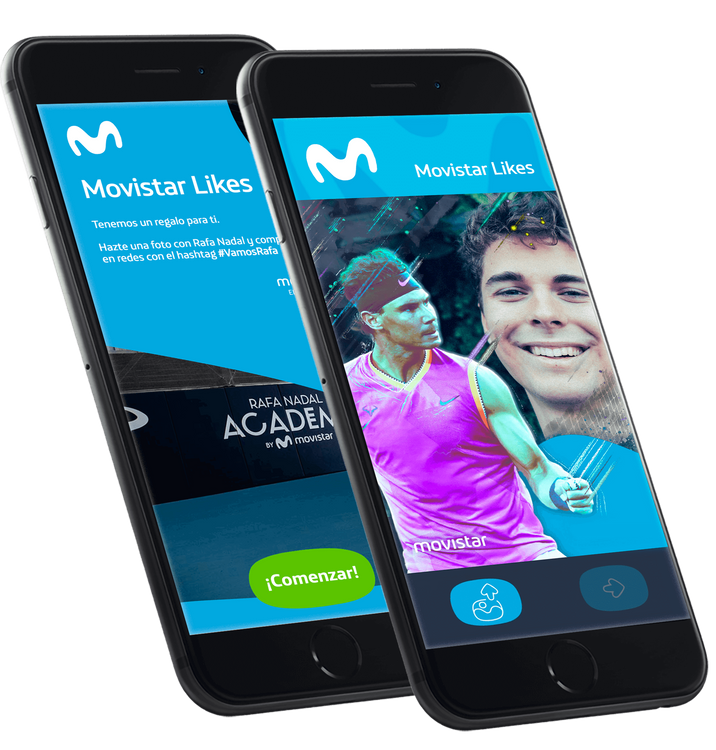Everything you need to know about Native Mobile Apps
In the digital era, mobile applications have marked a before and an afterThese have become an extension of our daily lives.
From managing our finances, to shopping online, to entertaining ourselves and connecting with the rest of the world, apps are our basic tools to move in today's world.
What many people may not be aware of is that there are different types of mobile applicationswith different functionalities, developments and even programming languages.
In this post, we will focus on analyzing the most widespread type of app, the Native mobile applications. We will see their advantages and disadvantages, as well as their comparison with the other two types of applications: the Webapps and the PWApps.

What are native applications?
Since 2007, when the cell phone industry welcomed smartphones, mobile applications have been part of the way we understand and use our mobile devices. interacting with technology. From that moment on, our interaction with technological devices became much more intuitive, natural and accessible.
If we look at the definition of native applications, they are programs developed specifically to operate on an operating system in particular, such as Android or iOS, using programming languages and development tools specific to each platform. These apps are installed directly on our mobile devices through the application store. The most widespread are Google Play and Apple App Store.
Because they are designed for a specific operating system, native applications can optimize their performance, taking full advantage of the device's hardware functionality (camera, GPS, sensors...) offering a seamless and highly integrated user experience.
In terms of development, the fact that the mobile application is native means that the programming team has to develop as many apps as operating systems are used.
It is usual to create two applications, one for Android and one for iOSBut increasingly, we are witnessing the birth of new markets and devices. For Virtual Reality glasses such as the Meta Quest or the Apple Vision Pro, it is also necessary to develop the VR app ad-hoc (customized) for these new hardwares.
You may be interested in → Business Innovation: Spatial Computing Applications in Extended Reality.
An example of a native mobile application that includes the latest innovations in this type of development can be found in the Augmented Reality app released by Disney, Telefónica y Ferran Adrià. Your Story in the Kitchen combines entertainment, gamification and recipes in an educational app designed for the whole family.
Main advantages of native mobile applications
Once we have seen its definition, it is time to delve into the advantages for both companies and users of the development of native mobile applications. Superior performance and optimized user experience are some of them.
Let's look at the main advantages of native apps:
Increased security
Native mobile apps offer a wide range of additional layer of security in our developments, since a rigorous review process is carried out by the official application stores such as Google Play or App Store.
Users know that the apps downloaded from these official stores have passed checks for possible vulnerabilities and malicious code, reducing the risk of malware.
In addition, these applications can take advantage of the frequent security updates provided by the devices and operating systems themselves.
Improved customization
OS-specific development also means improvements in app customization by allowing developers to optimize the user experience according to the specific characteristics and functionalities of each platform.
Native applications can tailor their user interface to match the aesthetics and conventions of each operating system, which not only improves visual consistency, but also makes the application more intuitive for users.
Increased performance
If there is one feature of native applications that sets them apart from other types of apps, it is the higher performance to users. Thanks to its hardware optimization, lower latency and improved response times.
As they are developed specifically for the operating system of the device, they can making the most of the resources of the mobile device. Delivering a smoother and faster experience. A particularly noticeable advantage in applications that require high performance such as video games with high graphics, video editing or 3D modeling applications.
You may be interested in our publication→ Virtual Reality in video games: the future of entertainment.
Use without Internet connection
Another of the main advantages of native mobile applications is their ability to work in the following ways without Internet connectionThis feature is especially valuable in situations where connectivity is limited.
This is a high efficiency in the use of phone data and faster response time - by not interacting with a remote server. It also gives users the advantage of always having access to the content and files stored in the app and being able to use it at any time.
Disadvantages of native Apps
Although native mobile applications offer a number of advantages, they also have some significant disadvantages that can be covered by the other types of apps. These disadvantages can be summarized as follows:
- Increased development cost and time. Developing these native apps tends to be more costly and time-consuming, as there is a need to code for as many operating systems as there are operating systems. This approach requires developers to have specialized skills in multiple programming languages and frameworks, which raises both initial development and hiring costs.
- They are not multiplatform. Its native app nature is a disadvantage when considering a cross-platform strategy. To reach users on different operating systems, such as Android and iOS, it is necessary to develop and maintain separate versions of the same application, duplicating the work and resources required. This lack of interoperability can limit the accessibility of the application to a wider audience.
- Upgrades depend on users. Although native apps can take advantage of the operating systems' automatic updates, in many cases, these updates depend on the user's final acceptance of them. Not only that, each native app update must be designed, tested, optimized and approved by each operating system separately. This not only increases work and costs, but also lengthens time to market. This complexity can hinder companies' ability to respond quickly to market changes or correct critical bugs efficiently.
Learn more about the advantages of web applications o WebApps at What is a WebApp?.

Type of mobile applications
To counteract the disadvantages that can arise when developing native mobile applications, over the last few years, the following have been appearing new types of mobile applications in the app market.
In addition to native applications, we can nowadays also find web applications and hybrid or progressive applications. In the following, we will analyze in detail their differences through examples of applications developed in different sectors.
Differences between native Apps, WebApps and PWApps
Native applications, as we have seen throughout this article, are apps developed specifically for an operating system such as iOS or Android, offering high performance and excellent integration with the device hardware.
On the other hand, we find the WebApps o web applicationsThe new version of the software, accessible through a web browser, does not need to be downloaded by users and is automatically updated, ensuring that the latest version is always being used.
They represent the evolution of the more static web pages, bringing together in a single space, the interface and interaction of desktop applications with the agility, active collaboration between users, and cloud storage. that Internet services offer. An intuitive and easy-to-share solution like Rafa Nadal's WebApp. Developed in one of the last editions of Roland Garros. A quick, simple and effective action that at the time was trending topic on Twitter (X) getting more than 18,000 photos.
Finally, we find the PWApps or hybrid applications, developments that combine elements of both working as native apps, but built with web technologies, which allows for a more efficient use of the web. easy upgrade and cross-platform maintenance.
Currently we find great examples such as Spotify, Instagram, Drive... All of them are apps that can be downloaded from the app stores, but do not require the use of mobile resources to work properly. Everything is done through a external server and cloud storage.
Examples of mobile applications developed by Imascono
Now that we have seen the main types of mobile applications, it is time to get to know some of the most important ones. examples and use cases that have been carried out in different sectors.
- The development of more agile, intuitive and customized mobile applications offers the opportunity to develop the entire interface of an e-commerce or virtual store from scratch, putting the user at the center. As in the case of the WebApp developed together with Movistar and Prosegur Alarms, where users can see the different security devices in action through an interactive web-based home. All without the need to download any mobile application.
- Another application in the world of retail that exemplifies the strategy of integrating several technologies in the same commercial space is the La Torre Outlet Shopping Center App and Content Manager. A perfect mobile application for user loyalty and gamification.
- An application that combines fun and Augmented Reality is the success story of Lacasitos App. An AR app where children can create their own world full of fun and imagination, thanks to the amazing characters that come to life thanks to technology.
- As an example of an application developed for the new devices of Virtual Reality we found the success story of KAI XR Platform. A VR app for children and students through which you can access different immersive experiences that enhance imagination and learning about different subjects: from natural sciences to technology.
From Imascono We have helped a multitude of companies in different sectors to develop the mobile applications more suited to your needs and users.
Native Apps, WebApps and PWApps all offer a multitude of benefits to facilitate the interaction between users and brands. Becoming one of the main communication channels for companies.
Our engineers and designers will be happy to answer all of your questions and find out how we can help you to develop your mobile applicationDo you need a mobile application, native or web, adapting its functionalities to the specific needs of your company? Do you need a mobile application? Get to know our mobile application development service. ¡Contact us at!



